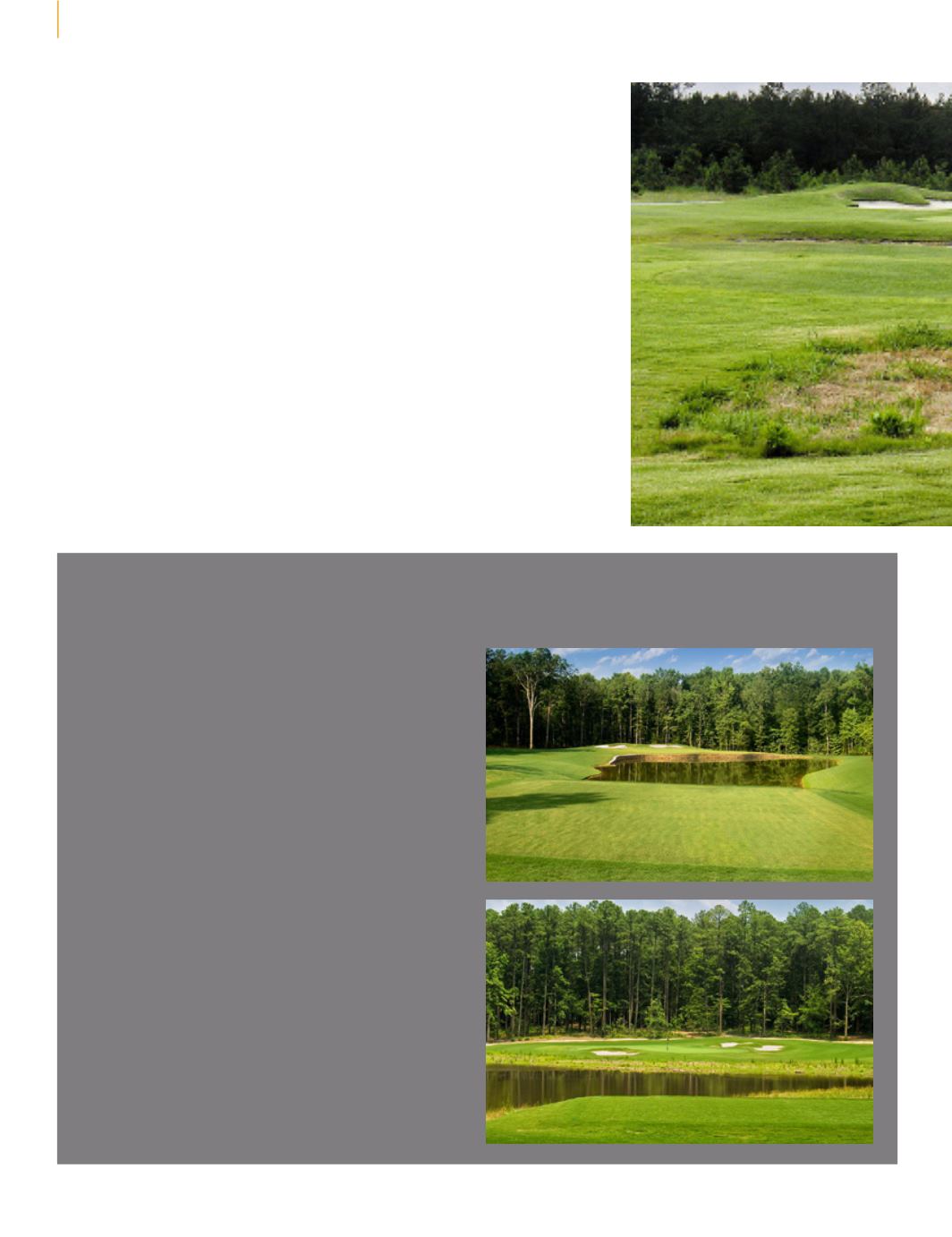

26
|
By Design
Does Schoeder have a particular
approach or philosophy to golf
design? “Yes and no,” he says. “I
like to work with the land first and
foremost. If pinned down, I would
say my approach is ‘classic-naturalist’.
“Intense and sensitive analysis of the
land dictates a style for each individual
course we design or remodel,” he
continues. “Some parcels of land
require little earth-moving as a result
of their inherent natural beauty. More
often today, new golf properties and
the remodel of existing golf courses
have fewer ‘God-given’ natural golf
features and therefore require a more
creative vision and physical shaping. In
both scenarios, the existing landscape
remains the foundation for our design.
“Even the simplest landscapes have
unique features that may include
a small mound or an unexpected
view that can be highlighted to
create a distinct and memorable golf
experience. If a site calls for it, we are
not timid about moving and shaping
the earth. We are also confident
enough to leave it alone. The
ultimate goal is to forge the best golf
experience possible. Every constraint
is a design opportunity we utilize to
create memorable golf courses.”
For both architects, membership of
the ASGCA represents an objective
achieved: “A goal from early in my
career was to become an ASGCA
member,” says Johnson. “It is the
pinnacle of the profession. If you
look back at the founders of the
organization and their impact on the
landscape of golf courses in the United
States and beyond, it is incredible.”
“Membership in the organization
signifies that an architect is a
dedicated and qualified professional
golf course architect,” adds Schoeder.
“Would you have a doctor operate
on you without a medical license?
INTERVIEW
Belmont Lake Golf Course, Rocky Mount, North Carolina
“Contrary to its name, Rocky Mount is neither rocky, nor
mountainous,” says Johnson. “In fact, most of the region
is very flat and often prone to flooding. Fortunately the
Belmont Lake property offered more topographic variety
with a nice mix of gently rolling land to supplement the
flatter sections of former farmland. The site also featured
the fantastic, 80 acre, Belmont Lake.
“My main goal for the course, though it may seem
cliché, was to create a challenging and fair test of golf
that would provide interest, variety and excitement to
players of all abilities.
“The Belmont Lake course is right there in front of you.
There are very few forced carries. The fairways are
very generous. The greens are nicely sized, with subtle
contouring and are receptive to run-up shots. Most holes
have bail-out areas for more conservative players or
those wishing to play away from hazards. I am big fan
of creating visual illusions to make holes appear more
difficult than they are and keep the golfer off balance.
The player must trust the yardage, not their eyes.
“While most of the holes flow through woodlands,
there is a handful with few trees where wind plays a
larger role. There is a nice balance of dogleg lefts,
dogleg rights, straight holes, large greens, small
greens, and a wonderful variety of yardages. The four
par threes play in opposite directions, as do all of the
par fives.”
PROJECT PROFILE


















